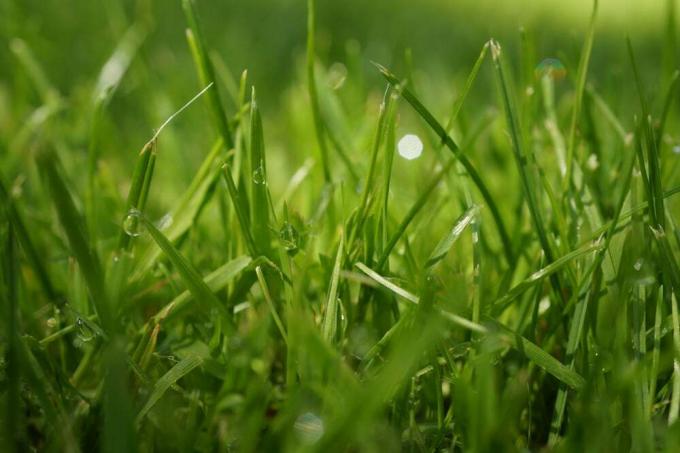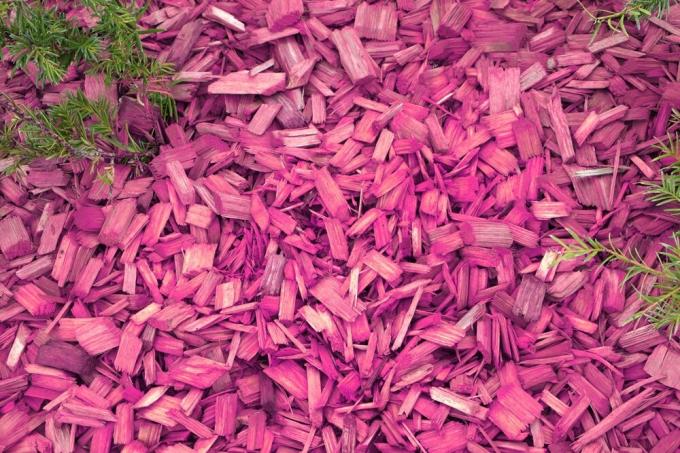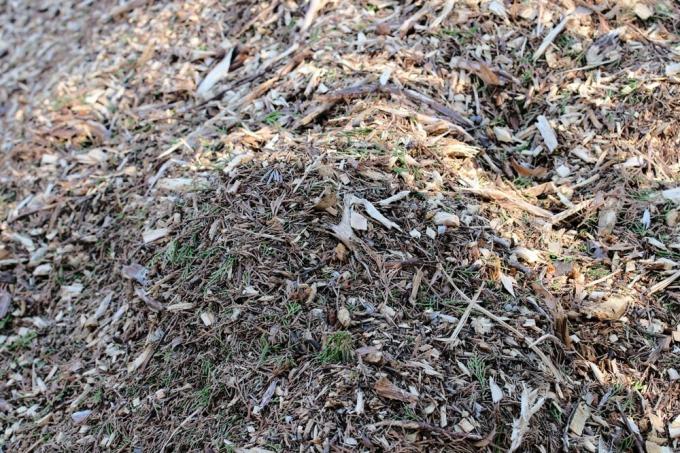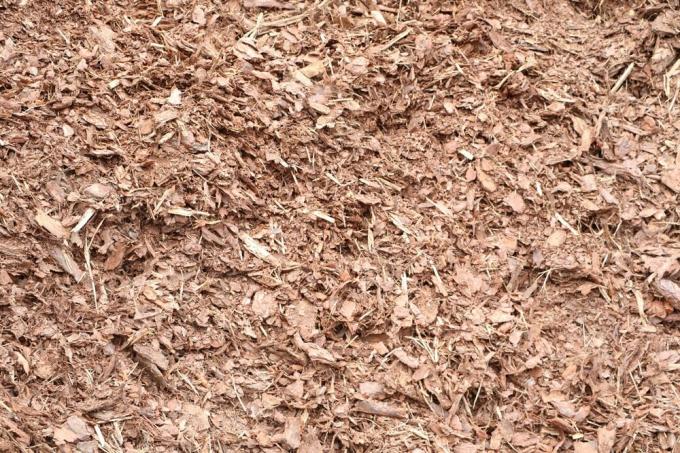

Table of contents
- lawn clippings
- home fertilizer
- lawn mulch
- plant fertilizer
- top layer
- compost
The lawn clippings that regularly accumulate after mowing are a real treasure. It contains important nutrients that promote the growth of plants of all kinds. In addition, it can be used to control weeds. And finally, it can also be perfectly composted to obtain rich soil. In short: lawn clippings are far too valuable to just throw them away in the organic waste bin.
lawn clippings
During the growth phase, a lawn must be mowed regularly. This brings it into shape and ensures an evenly closed surface. It's a bit like cutting your hair: mowing also stimulates growth and thus promotes a beautiful lawn. Even if it's annoying at times and can be very time-consuming - without mowing, the lawn would wither and become unsightly over time. The problem is not so much the mowing itself, but rather the clippings that are produced. Many garden owners are unsure about what to do with it. Just leave it? throw it away or dispose? Or use it as fertilizer? Basically, the lawn clippings are suitable for the following measures:
- as self-fertilizer for the lawn
- as a natural fertilizer for other plants
- as a top layer to control weeds
- as compost

This makes it clear that lawn clippings are far too good not to be used in the garden. It can easily be integrated into the natural cycle of life. Last but not least, this often saves costs because fewer additional fertilizers have to be purchased. Above all, however, it is an important contribution to environmental protection and the preservation of our natural basis of life.
home fertilizer
Clippings such as lawn clippings are organic material that will naturally decompose. When rotting, nutrients are released that plants need to grow and thrive. Clippings are therefore a natural fertilizer. It can therefore simply remain on the lawn after mowing. The rotting process will begin immediately. The fertilizing effect follows after a few weeks.
Tip:
With a conventional lawn mower, the clippings usually end up automatically in a grass catcher. If you want to leave it on the lawn, you should therefore remove this basket when mowing.
In order to use the lawn clippings as self-fertiliser, the mowed stalks should not be too long. Basically: The shorter the mowed stalks are, the faster the rotting process begins. Long stalks, on the other hand, are extremely dried by the sun in summer and initially turn into hay. After several mowings, they can also lead to the lawn being literally covered over. The blades of grass then receive less air and, above all, less sunlight, which in turn restricts growth.
lawn mulch
With a so-called mulching mower, the clippings are already extremely shredded during mowing and thrown out again immediately. Anyone who wants to use lawn clippings as their own fertilizer for the lawn should therefore think about purchasing such a mulching mower.
Even with a layer of grass clippings, the lawn must of course be watered in summer. This watering is even necessary to drive the rotting of the clippings. So there is no need to worry about this. What is much more important, however, is that in all probability the cut of each individual mowing process should not be left unturned. At some point, the layer could just become too dense. Therefore, the mulch should be used for other purposes from time to time.
plant fertilizer
Of course, the fertilizing effect of the lawn clippings not only extends to the lawn itself, but also applies to all other plants in the garden. It can therefore also be used perfectly as a fertilizer in beds or as an important nutrient supplier for hedges, trees or shrubs. However, you should always keep in mind that it takes some time for the cut to actually rot. It is therefore not suitable for ensuring the fastest possible nutrient supply. The clippings can be applied at the following points:
- right in the roots of the plants
- in areas adjacent to the root area
- in beds between the plants and in the aisles
- for hedges directly in the root area under the hedge
- in the case of shrubs, covering the entire circumference of the shrub
- in roses only to a limited extent in the root area
The lawn clippings should always be applied over the entire area. The aim should be that no more sunlight can penetrate through it. A thickness of 1 cm is usually sufficient for this. Of course, when watering the plants, the applied mulch is also watered. Under certain circumstances, this mulch fertilization alone may not be sufficient. Additional fertilizers are often necessary, especially for plants with a very high nutrient requirement.
A notice:
When fertilizing plants, it is fundamentally important to pay attention to how and whether the fertilizer works. If, for example, leaf changes occur despite fertilization with lawn clippings or if growth is slowed down, additional fertilizer is needed.
top layer
Grass clippings are perfect as a top layer around the plants. Such a top layer has two functions. On the one hand, it ensures that no light can penetrate through it. This inevitably means that no weeds will grow under it either, since they also absolutely need light. Any mulch fertilization will therefore also contribute to weed control. However, under certain circumstances, seeds can also be entered. On the other hand, this top layer also provides a certain degree of protection against the cold. Even in May there can still be ground frost in our latitudes. The mulch layer from the first lawn cuts can be a valuable protection. And the last lawn cuts of the year also protect the plants from the first drop in temperature in autumn.
compost

As organic material, the lawn clippings can of course also be composted. You just toss it in the compost and wait for it to rot. However, there may not be enough space for this. Especially if you have a larger lawn area and have to mow it frequently, you will soon be faced with certain limits. Therefore, it makes sense to drive on multiple tracks. The clippings should not only be composted, but also used for other purposes. When composting, it is also important to combine it with other organic materials such as kitchen waste.
 garden editorial
garden editorial I write about everything that interests me in my garden.
Learn more about mulch & bark mulch

Where can I get bark mulch for free? | 20 cheap sources of supply
Bark mulch for free is within reach if important sources of information are known. It is thanks to the Internet that generous donors of free bark mulch can be found with little effort. If the search comes to nothing, it is worth taking a look at this hand-picked list of 20 cheap sources of supply.

Pine mulch - an alternative type of mulch to bark mulch?
In the past, bark mulch made from native coniferous wood was almost exclusively used for mulching. In recent years, however, pine bark mulch has been on the rise. Since pine mulch has some differences to pine mulch, it can definitely be considered as an alternative to domestic mulch made from pine and pine.

Colored bark mulch: colorful decorative mulch | Where buy? Prices
Colored bark mulch is a visual highlight and can be used in many areas of the garden for decorative purposes. In addition, bark mulch protects the plants against weather influences and suppresses the growth of weeds. In addition, the plants are supplied with additional nutrients over a long period of time.

Bark mulch against weeds: how does mulch help to protect against weeds?
Mulch is becoming increasingly popular in the garden. This includes above all the bark mulch, which is made from waste from the wood industry. Bark mulch can be used for a variety of purposes, including weed suppression. How to do this is explained in this guide.

bark humus | Properties & uses of bark compost
Bark humus, often also called bark compost, is a fine thing in two senses. Fine because it is obtained from heavily crushed coniferous bark. Fine because it enriches plant soil with its ingredients. What are its advantages and how can the floor benefit from them?

Mushrooms in bark mulch | 4 tips to fight slime mold
Bark mulch is supposed to protect plants. However, if fungi such as the slime mold develop in it, the protective function can quickly be over. However, there is no acute danger. How to effectively fight fungi in bark mulch is here.



